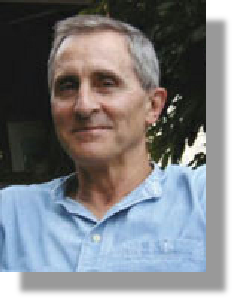Appendix 2 Further aspects of enchantment exercised by the beings of Faërie
To quote OFS in more detail (UH pp12-13) ‘Fairy as a noun more or less equivalent
to elf,’ he writes, ‘is a relatively modern word, hardly used until the Tudor period.
The first quotation in the Oxford Dictionary (the only one before 1450)…is taken
from the poet Gower...’ But Tolkien shows that in his poem Confessio Amantis Gower
is not describing a fairy but the kind of power that a being from the realm of Faërie
might have and exercise, or perhaps in the ancient sense ‘glamour’(In fact the young
full-blooded male in Gower’s poem is directing this power towards modest maidens
sitting in church)
And as he were of faierie
He scheweth him tofore here yhe
(as if he were from the realms of Faërie he appeared before their eyes)
But it is worth noting that Chaucer uses the word ‘fairy’ at the beginning of
the Wife of Bath’s tale when the narrator grumbles that interfering friars in their
desire to stamp out ancient beliefs ‘maketh that there ben no fayeryes’. Though Chaucer
also makes use of the thin divide between everyday living and the realm of Faërie,
albeit in a tongue-in-cheek manner, when the roaming knight is suddenly presented
with dance ‘Of ladyes four and twenty and yet mo..’ He rushes towards it in the hope
of discovering some wisdom, only to find it’s vanished and given way to the ugliest
old hag he had ever encountered. And it’s from her that he learns and accepts female
propaganda that amounts to a solution to his search to discover what women most desire:
to be obeyed! (Tolkien would no doubt have seen this as an urbane harnessing of ancient
lore for rather limited comic purposes!)
Returning to Tolkien for further contrast, it is interesting to recall the passage
in SWM (pp23-4) where Smith encounters in the Vale of Evermorn a dance of singing
maidens, which enchanted him so powerfully he was drawn ‘towards their ring’. Whereupon
the dance ceased and one of the company berates him for boldness yet invites him
to dance, ‘and for a while he knew what it was to have the swiftness and power and
the joy to accompany her.’ But only briefly and all that remains of the ecstatic
moment is the gift of an imperishable white flower.
And, of course, no one who’s read it can forget the altogether more destructive
enchantment experienced by the forlorn and bereft knight in Keats’ La Belle Dame
Sans Merci.
In all these examples it is clear that the realm of Fairy and the beings who are
integral with it are the main substance of Fairy Stories, not the individual ‘fairies’.
-¨-


